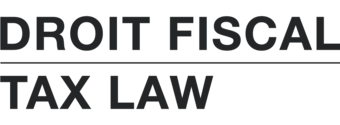When determining whether a loss is deductible, or conversely, whether income is taxable, there must first be a “source of income” or, in other words, a “business”. A business has traditionally been understood to mean anything that occupies the time, attention and labour of a person for the purpose of profit.
Income Inclusions / Sommes à inclure dans le revenu
Une cession de créance ne constitue pas un paiement
Un contribuable était actionnaire de plusieurs sociétés. Il avait de plus créé une fiducie pour son bénéfice et celui de sa famille. Au fil des ans, une de ses sociétés lui a octroyé plusieurs prêts et avances. Lors d’une vérification par Revenu Québec, il est venu à l’attention du vérificateur que plusieurs de ces prêts et avances n’avaient pas été remboursés dans le délai prescrit par l’article 115 de la Loi sur les impôts (« L.I. ») de sorte que le contribuable avait reçu plusieurs avantages imposables.
Can Break Fees “Reasonably Be Considered” to Have Been Received as an Inducement? (Revisited)
The Federal Court of Appeal (“FCA”) recently released a judgment[1] dealing with the tax treatment of “commitment fees” and “non-completion fees” (also known as “break fees”). The style of cause refers to Glencore Canada Corporation (“Glencore”). Glencore is a successor to Falconbridge Limited (“Falconbridge”).
Taxpayer “Ought to Have Known” About the Shareholder Benefits
The taxpayer was assessed shareholder benefits because BBH Ltd. (of which he was also a direct shareholder) paid premiums in respect of insurance policies that insured his life and that of his spouse and for which the beneficiaries were his spouse and stepchildren.
Shareholder Benefits Can Lead to Double Taxation
Two taxpayers were reassessed, a corporation and its sole shareholder. The shareholder sold financial products and life insurance policies through his corporation although, for some provinces, he had to conduct business as a sole proprietor due to provincial regulations.
